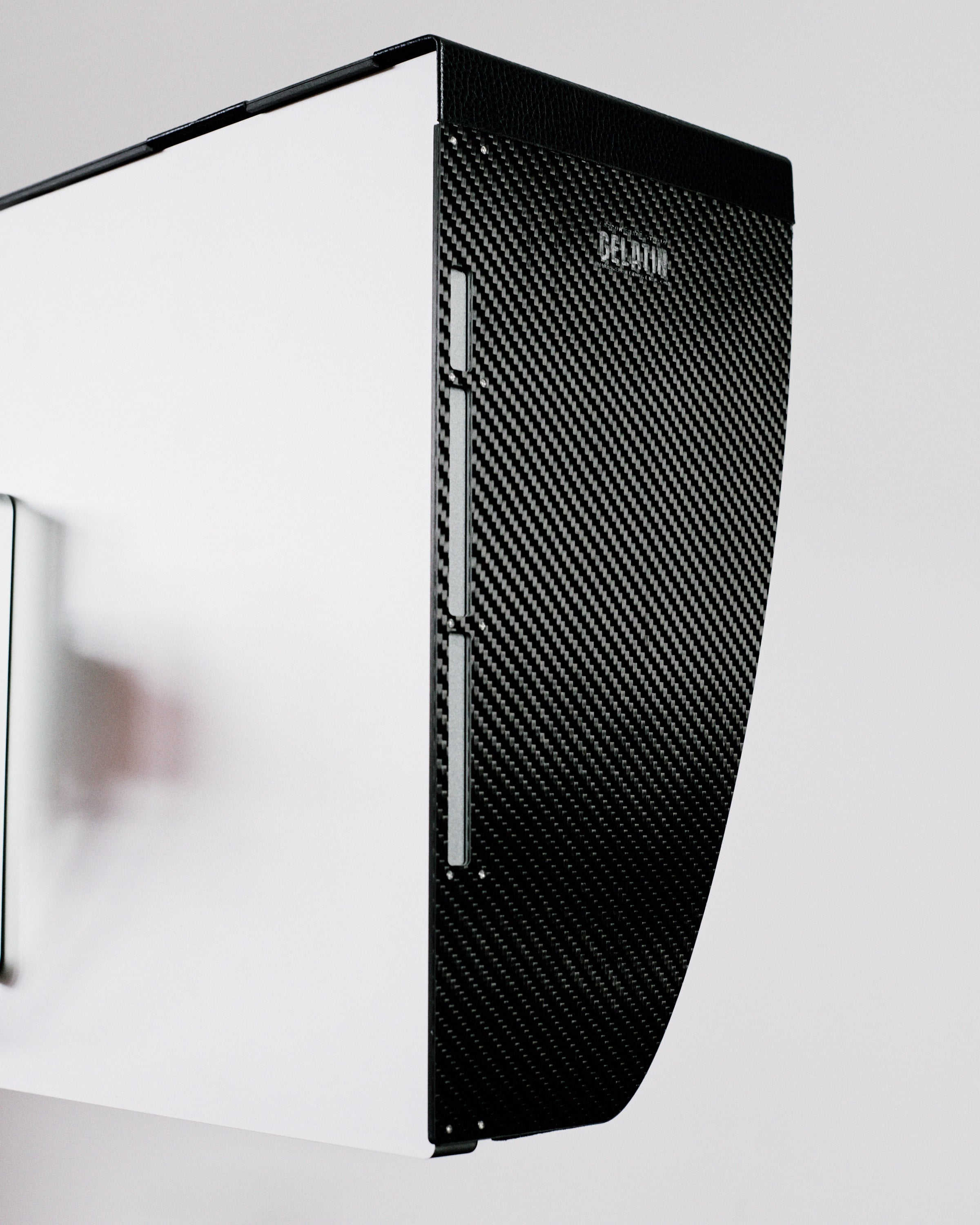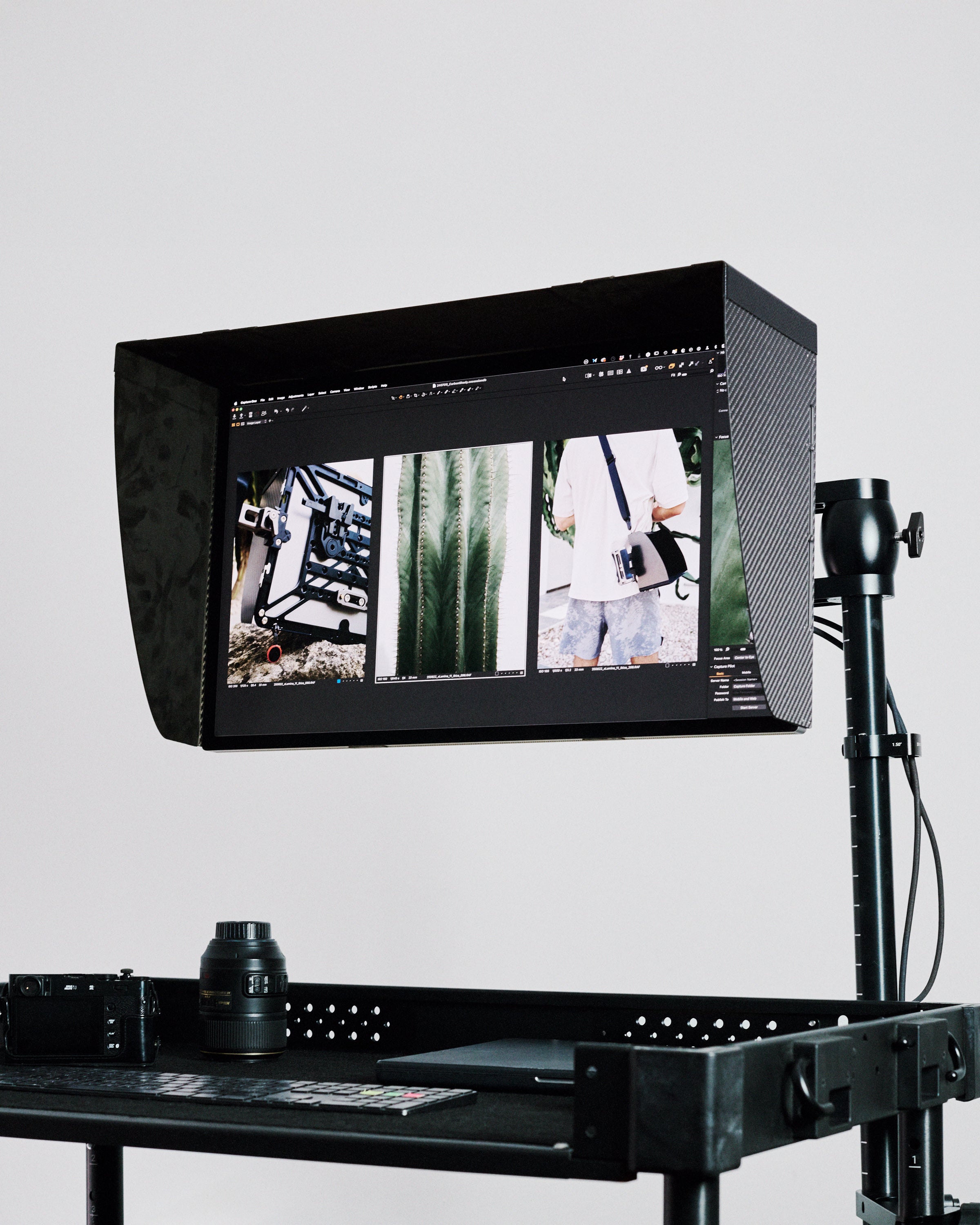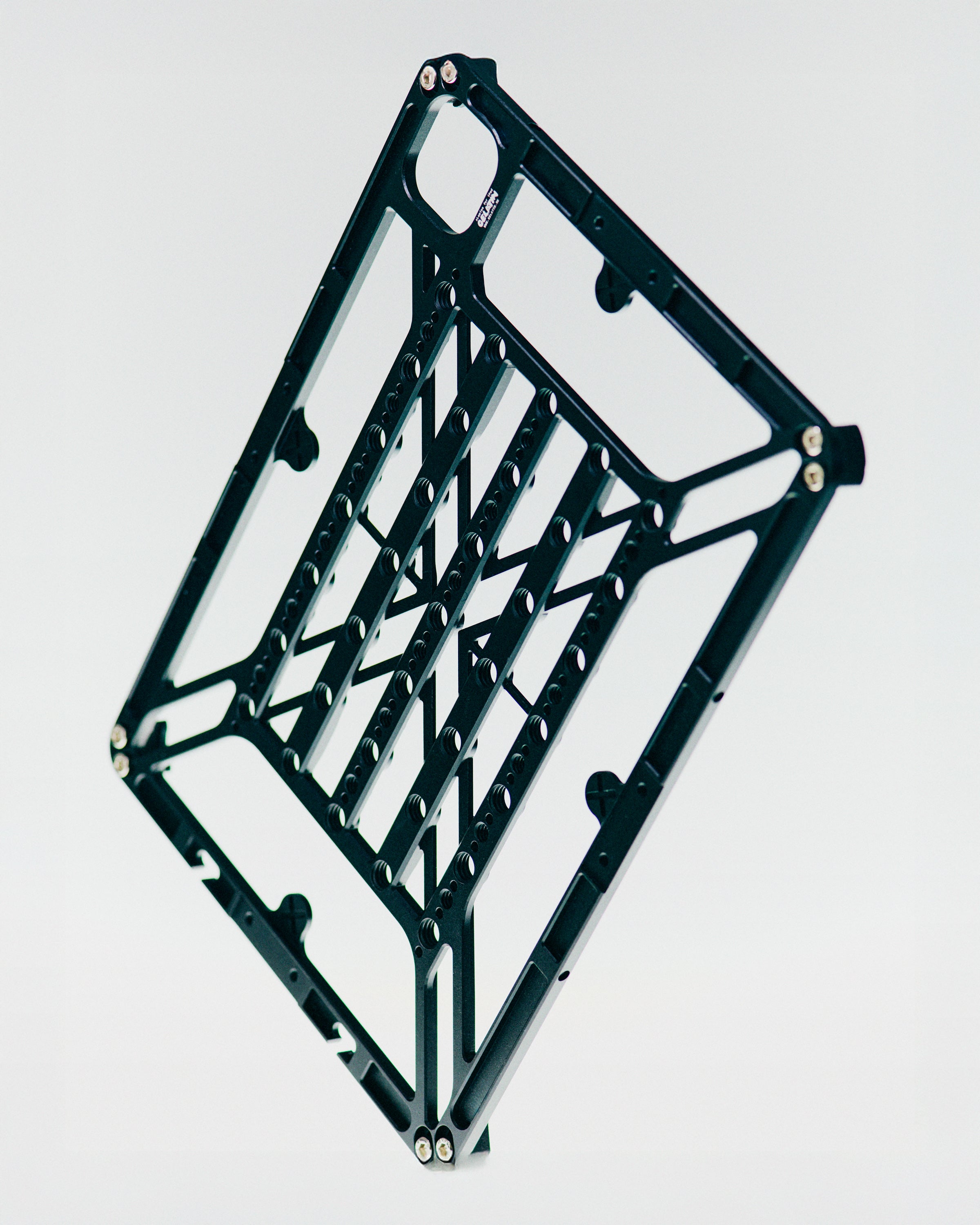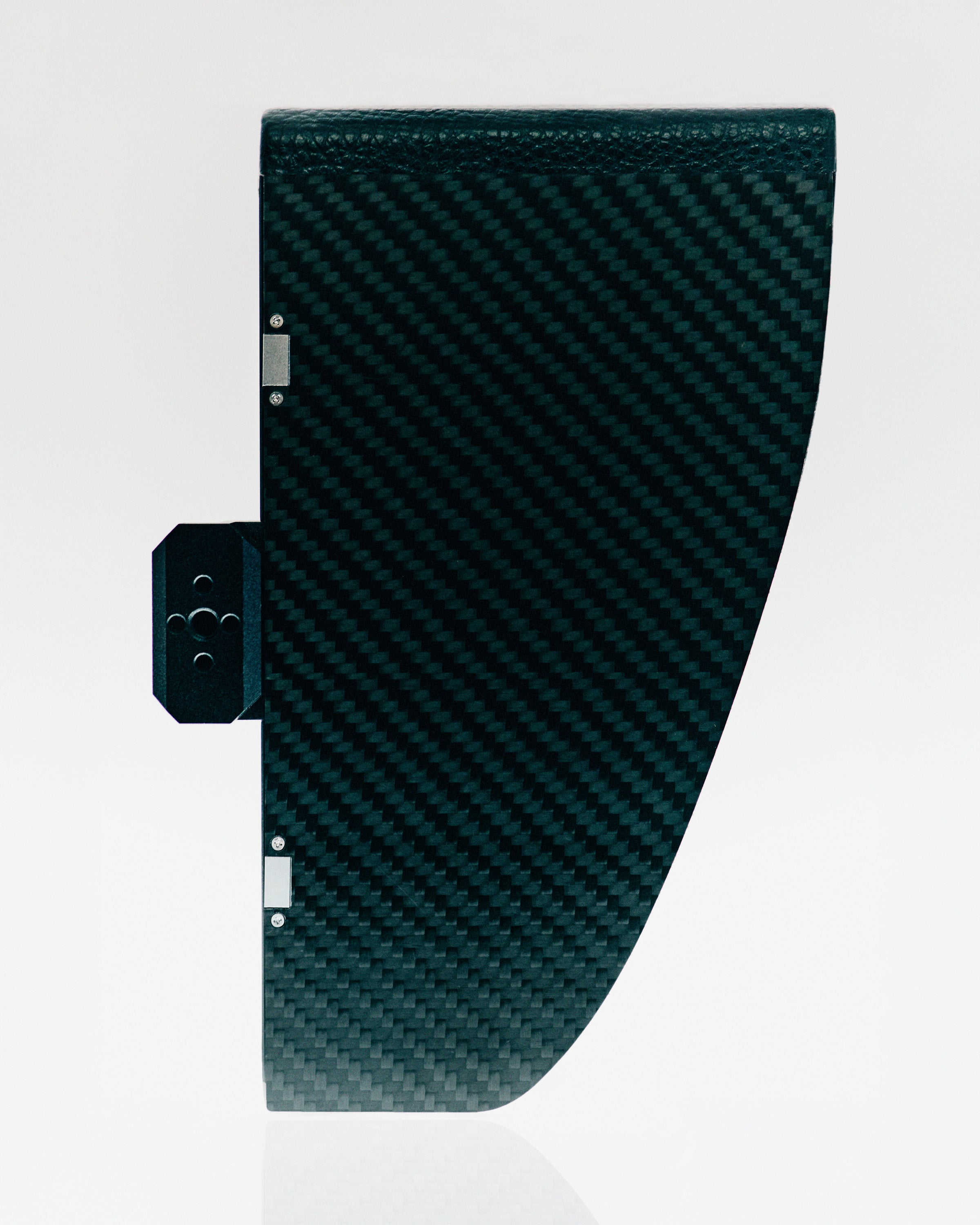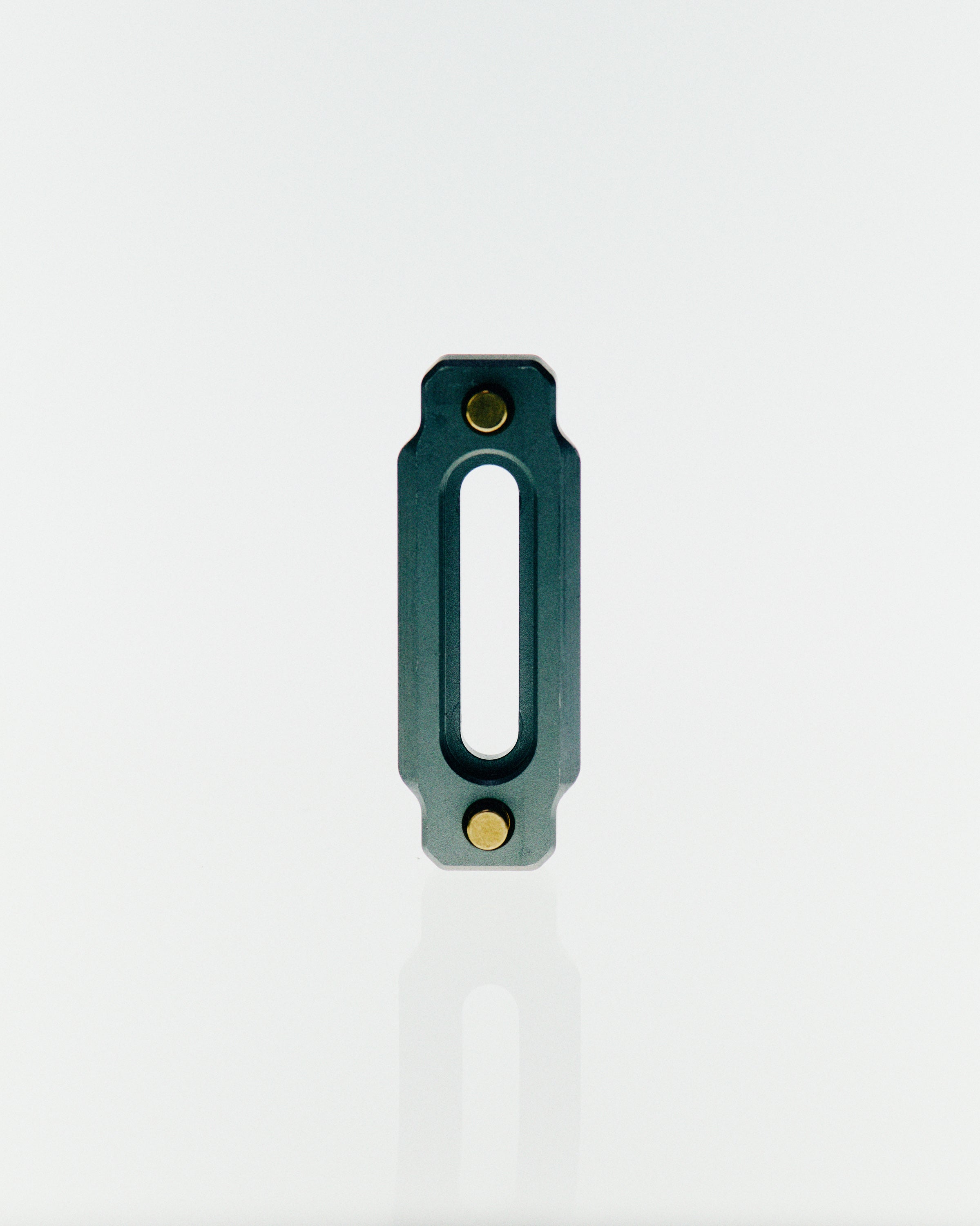Vcore can move stills to Capture One without a cable, but it’s not a replacement for tethering on commercial sets. Think of it as a niche tool for pre-light checks, scouting, safety-first angles, and long gaps—not for live-feedback fashion or high-tempo campaigns.
What Vcore Is (and how we used it)
Hollyland Vcore is a compact video TX that also promises wireless stills transfer into Capture One via the HollyLink plug-in.
My test setup
-
Camera: Fujifilm GFX100S (not on Hollyland’s supported list, and I also tried it with the Nikon D850 and it worked successfully).
-
Format: Lossless RAW
-
Computer: Mac + Capture One Pro + HollyLink v2.1.0
-
Mode: Vcore’s P2P Wi-Fi (laptop joins Vcore’s SSID)
-
Location: Two-room apartment; line-of-sight and next-room tests

Install notes (macOS)
-
Gatekeeper initially blocked the .coplugin (unverified developer).
-
Fix: System Settings → Privacy & Security → “Open Anyway”.
-
-
Plug-in then appeared in C1 (Preferences → Plug-ins → HollyLink).

Mounting
-
Hot-shoe fit is loose; Hollyland includes shim stickers. They work, but I’d rather run a longer USB-C and clip the unit to a strap or pocket (knowing that burying the radio will reduce range).
Who this is for
-
Digital Techs who occasionally need line-of-sight transfers where a 10–20 m USB-C run isn’t safe or feasible.
-
Photographers scouting exteriors, testing long lenses across a river/road, or placing the camera in hard-to-reach spots.
-
Small crews who want a simple “send me the frames eventually” pipeline with a built-in backup.
Features & Benefits (with real numbers)
1) “Captures eventually” pipeline
How it works: Vcore writes images to its microSD first, then forwards them to your Mac.
Benefit: You get a physical backup if Wi-Fi blips or you walk out of range.
Note: In my test, after disconnecting and rejoining Wi-Fi, the transfer resumed.
2) Capture One compatibility

What you see: C1 doesn’t show a camera in the Camera tool. Files land in a fixed folder:
~/Pictures/CaptureOne-HollyLink/<YYYY-MM-DD>/

Benefit: Simple, predictable ingest (set a Session/Hot Folder to watch this path).
Trade-off: No live device status, no focus/shutter control, no “connected” indicator.
3) Real, measured throughput
Observed timings (GFX100S lossless RAW):
-
First frame: ~16–25 s (same room)
-
Batch: 11 frames in ~2:00
-
Next room: latency roughly doubled
Why it feels this way:

vCore Network:
-
Band/Channel: 5 GHz, ch149
-
Width: 20 MHz (conservative; caps speed)
-
PHY: 802.11ac, MIMO 2×2 (NSS=2, MCS 8)
-
Security: WPA2-PSK
-
Mac link rate: ~173 Mb/s (RSSI ≈ −51 dBm; Noise ≈ −100 dBm; Utilization ≈ 0%)
At 20 MHz / ac / 2×2, real payload tends to be ~5–11 MB/s, which matches the field results—especially once walls/people cut SNR.
Benefit: Predictable “trickle-in” for scouting and safety angles.
Trade-off: Not fast enough for fashion/beauty sets that need instant review.

4) Simple on/off, pocketable power
-
Internal battery keeps the footprint clean.
-
Open item: Confirm charging while in use / pass-through power for all-day work. Realistically, plan two units or external power on long days.
5) Set-friendly when cables aren’t
Where it shines:
-
Line-of-sight exteriors (nature, architecture, rooftops).
-
Safety or access-limited placements (over water/traffic, cliff edges).
-
Composition tests before marching the whole crew into a risky position.
Where it doesn’t:
-
High-tempo tether sessions needing live feedback and LAN/Internet (Frame.io Live, Live for Studio, shared NAS, etc.). When your Mac joins Vcore’s SSID, you’re off your main network.
Pros / Cons
| Pros | Cons |
|---|---|
| Works even with unsupported camera (GFX100S) | Slow first frame (16–25 s) and batch latency grows with distance |
| microSD buffer = on-device backup, then forward | No camera presence in C1 (no status/control) |
| Resume after Wi-Fi drop worked in testing | Joining Vcore’s SSID means no studio LAN/Internet |
| Small, simple, quick to power on | Loose hot-shoe fit; shipping with shim stickers |
| Predictable hot-folder path for ingest | 20 MHz channel width limits throughput; indoor walls hurt |
| Legit niche tool for scouting/safety angles | Battery-bound; pass-through power TBD |
Quick Spec Box (what we actually measured)
Wireless (from Mac diagnostics & WifiMan scans)
-
SSID:
HLD_…(Vcore AP) • 5 GHz ch149 • 20 MHz -
PHY: 802.11ac, MIMO 2×2 (NSS=2, MCS 8)
-
Link rate (Mac): ~173 Mb/s • RSSI ≈ −51 dBm • Noise ≈ −100 dBm
-
Security: WPA2-PSK • Channel utilization ≈ 0% (clean RF)

Performance
-
1st frame: 16–25 s (same room)
-
11 RAWs: ~2:00 total (GFX100S lossless RAW)
-
Range: Next room ≈ 2× latency; LOS much better
-
Recovery: Transfer resumed after Wi-Fi reconnect

File handling
-
Destination:
~/Pictures/CaptureOne-HollyLink/<date>/ -
Capture One: no camera device shown; treat as hot folder workflow
Power & Mounting
-
Internal battery (runtime varies) • Hot-shoe fit is loose; shim stickers included
Workflow Tips (to make it usable)
-
Session setup: Point a Capture One Capture/Selects/Hot Folder at
~/Pictures/CaptureOne-HollyLink/<date>/to see files as they land. -
Radio discipline: Keep line of sight; avoid pockets, bodies, and metal.
-
Power plan: Treat it like a wireless card dumper—budget external power or a second unit.
-
Backup logic: Since microSD is first-write, don’t erase cards until you verify ingest.
-
Network plan: If you need LAN/Internet, consider router-mode scenarios (test whether Vcore can join a router SSID or whether Hollyland supports client mode/bridge in firmware).
Numbers You Can Share with Clients
-
Typical first frame: 16–25 s (GFX100S lossless RAW, P2P, one room).
-
11 frames / lossless RAW: ~2:00 min total.
-
Next-room test: first-frame latency ~2× baseline.
-
Resume after Wi-Fi drop: Successful in my test; needs loss audit to confirm zero missing frames.
Wishlist for Hollyland
-
MacOS notarization so the plug-in installs without Gatekeeper friction.
-
Capture One device status (even if “virtual camera”) to give ops confidence.
-
Client/bridge mode so laptops can stay on studio LAN/Internet while receiving.
-
Locking shoe or cage mount—ditch the shim stickers.
-
Publish sustained throughput for common RAW sizes; add on-screen queue/ETA.
- External battery support and/or passthrough power.
Verdict
Not a cable killer. But as a field utility for getting frames eventually—with a redundant microSD backup—Vcore earns a spot in the kit. Use it deliberately: tests, scouts, long shots, risky placements. For high-tempo tethering and client-critical live review, a 10–20 m cable + proper routing still wins.
NOTE: You may have noticed a .NEF file on the screenshot of hot-folder path. Yes, I tested with Nikon D850 before I figured out it was going to a hot folder, and not Capture One folder so I thought it wasn't working, but it did. 14 seconds for the 1st image.


